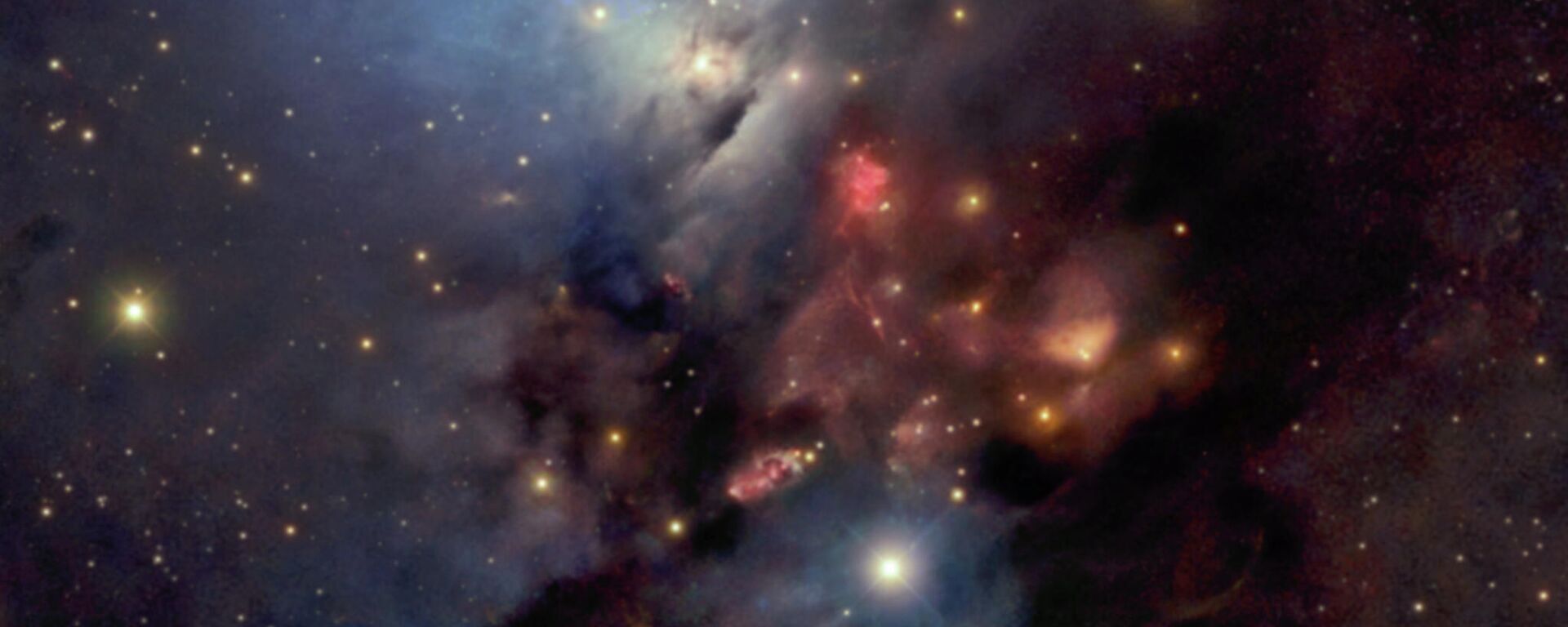https://sputnikglobe.com/20230615/researchers-discover-chemical-traces-of-universes-first-stars-1111168369.html
Researchers Discover Chemical Traces of Universe's First Stars
Researchers Discover Chemical Traces of Universe's First Stars
Sputnik International
Researchers from China, Australia, and Japan have made a significant discovery by identifying the chemical traces of some of the oldest stars in the universe.
2023-06-15T04:01+0000
2023-06-15T04:01+0000
2023-06-20T17:11+0000
beyond politics
science & tech
space
big bang
star
space exploration
https://cdn1.img.sputnikglobe.com/img/07e7/03/0f/1108431825_0:422:2001:1547_1920x0_80_0_0_6dd7e4b1ecf410ecc612bbc0bd0db61b.png
Researchers from China, Australia, and Japan have made a significant discovery by identifying the chemical traces of some of the oldest stars in the universe.The researchers focused on first-generation stars that appeared approximately 100 million years after the Big Bang. These stars had short lives, ending in partial explosions, and can only be detected through the chemical signatures they left in the subsequent generation of stars.The team found evidence suggesting that first-generation stars could have had a mass up to 260 times that of the sun, aligning with astronomers' predictions.To locate these ancient stars, officials searched for stars lacking significant amounts of metal elements, as the first-generation stars were primarily composed of hydrogen and helium. They specifically examined a star called LAMOST J1010+2358, which displayed distinct chemical characteristics. By comparing its chemical spectrum with theoretical models, the team confirmed that the parent star of LAMOST J1010+2358, a first-generation star, had a mass 260 times that of the sun.Professor Alexander Heger from Monash University in Australia emphasized the importance of studying first-generation stars as they represent the origins of the universe. Understanding these stars helps unravel the history of the cosmos. Quentin Andrew Parker, the director of the Laboratory for Space Research at the University of Hong Kong, explained that finding evidence of these stars was like searching for a needle in a haystack due to the vast number of stars in the galaxy.The research relied on observations from two prominent telescopes: the Large Sky Area Multi-Object Fibre Spectroscopic Telescope (LAMOST) near Beijing and the Subaru Telescope in Hawaii. The collaboration between different nations and researchers was crucial to the success of the study, highlighting the significance of international cooperation in scientific endeavors.The findings of the study was published in the journal Nature.
https://sputnikglobe.com/20230418/scientists-discover-mechanism-that-may-help-locate-habitable-planets-1109639070.html
Sputnik International
feedback@sputniknews.com
+74956456601
MIA „Rossiya Segodnya“
2023
News
en_EN
Sputnik International
feedback@sputniknews.com
+74956456601
MIA „Rossiya Segodnya“
Sputnik International
feedback@sputniknews.com
+74956456601
MIA „Rossiya Segodnya“
big bang, the afe of stars, oldest stars in the universe which, large sky area multi-object fibre spectroscopic telescope, subaru telescope, laboratory for space research at the university of hong kong, national astronomical observatories
big bang, the afe of stars, oldest stars in the universe which, large sky area multi-object fibre spectroscopic telescope, subaru telescope, laboratory for space research at the university of hong kong, national astronomical observatories
Researchers Discover Chemical Traces of Universe's First Stars
04:01 GMT 15.06.2023 (Updated: 17:11 GMT 20.06.2023) The discovery of the chemical traces of the oldest stars offers valuable insights into the early universe and our origins, filling a gap in our understanding of cosmic history.
Researchers from China, Australia, and Japan have made a significant discovery by identifying the chemical traces of some of the oldest stars in the universe.
The researchers focused on first-generation stars that appeared approximately 100 million years after the Big Bang. These stars had short lives, ending in partial explosions, and can only be detected through the chemical signatures they left in the subsequent generation of stars.
The team found evidence suggesting that first-generation stars could have had a mass up to 260 times that of the sun, aligning with astronomers' predictions.
"Astronomers had speculated that in the early universe, there were stars that could be extremely colossal," Zhao Gang, a researcher from the National Astronomical Observatories, Chinese Academy of Sciences and one of the study’s authors, told US media. "Scientists had been trying to find the proof for decades."
To locate these ancient stars, officials searched for stars lacking significant amounts of metal elements, as the first-generation stars were primarily composed of hydrogen and helium. They specifically examined a star called LAMOST J1010+2358, which displayed distinct chemical characteristics.
By comparing its chemical spectrum with theoretical models, the team confirmed that the parent star of LAMOST J1010+2358, a first-generation star, had a mass 260 times that of the sun.
Professor Alexander Heger from Monash University in Australia emphasized the importance of studying first-generation stars as they represent the origins of the universe. Understanding these stars helps unravel the history of the cosmos.
Quentin Andrew Parker, the director of the Laboratory for Space Research at the University of Hong Kong, explained that finding evidence of these stars was like searching for a needle in a haystack due to the vast number of stars in the galaxy.
"The first-generation star we observed has the potential to become the oldest star we have ever seen," Heger, a professor in the school of physics and astronomy at Monash University in Australia who was part of the research team, said. "It probably had only lived for 2 1/2 million years and then exploded."
The research relied on observations from two prominent telescopes: the Large Sky Area Multi-Object Fibre Spectroscopic Telescope (LAMOST) near Beijing and the Subaru Telescope in Hawaii. The collaboration between different nations and researchers was crucial to the success of the study, highlighting the significance of international cooperation in scientific endeavors.
The findings of the study was published in the journal
Nature.



